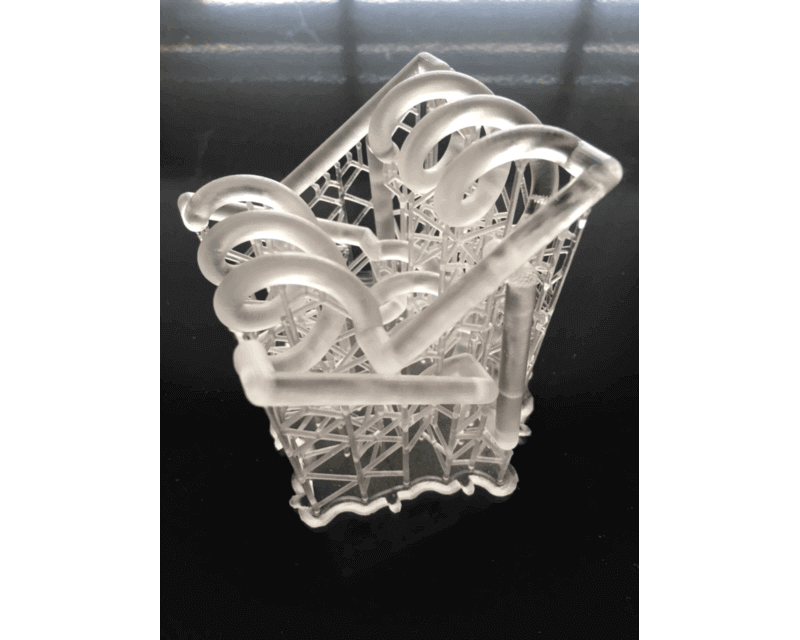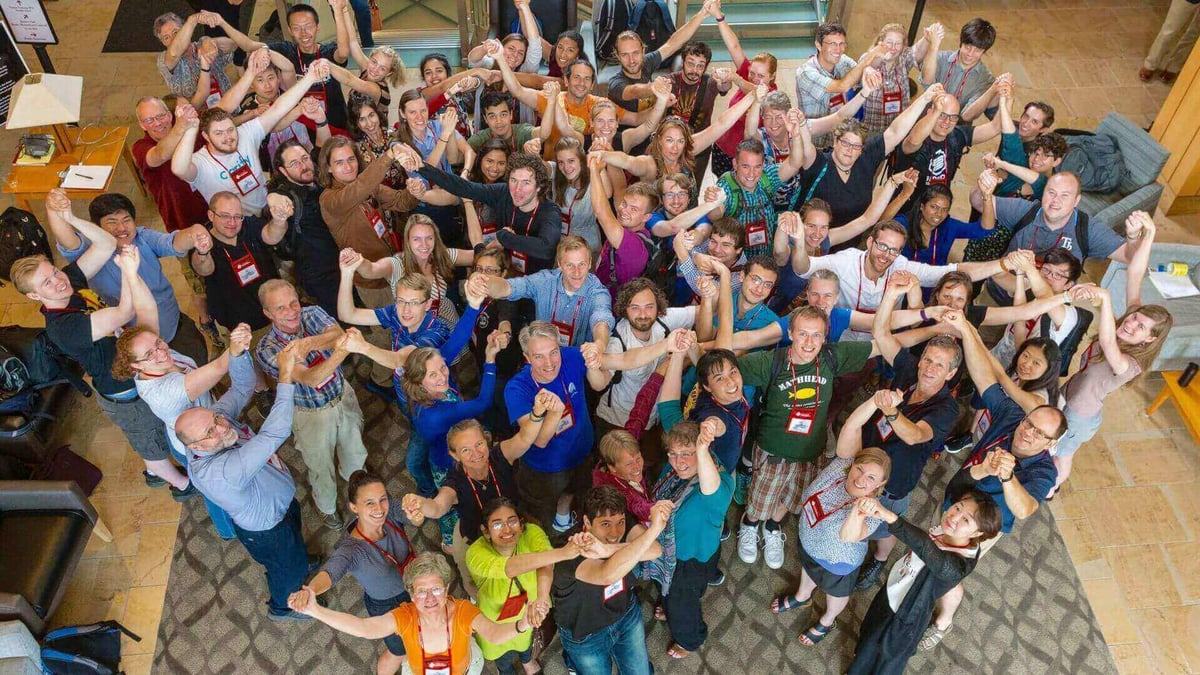Over 100 knot theorists used a Form 2 and an Ultimaker 2 Extended+ to make 3D printed models at the UnKnot Conference at Denison University.
Based out of Denison University in Ohio, the UnKnot Conference is a four-day event that brings mathematicians and students together to explore and celebrate knot theory.
A relatively new field for mathematical research, knot theory utilizes algebraic, topological, geometric, and analytic arguments to create and compare different knots. For the third straight year, around 100 knot theorists gathered at the UnKnot Conference to discuss this abstract theory.
One of the event organizers, Denison University mathematician Lewis Ludwig, was an early adopter of 3D printing technology in liberal arts colleges. Teaming up with artist Chris Faur, the dynamic duo decided to set up an Ultimaker 2 Extended+ and Form 2 resin printer at the UnKnot Conference, both of which were used to print giveaway knots for the attendees.
Faur even set up a UV-light drying station with a solar rotating stand to cure the knots that were 3D printed on the Formlabs 3D printer.
There were also hands-on 3D printed mathematical knot models on display beside the 3D printers, which were created by Ludwig, Elizabeth Denne, and Laura Taalman. Taalman’s designs are also available to download from Thingiverse, so you can try fabricating your own knots at home.

UnKnot Conference for Pretzel Loving Math Geeks
The first night of the four-day event was wrapped up with a comprehensive 3D printing workshop, which helped introduce participants to tools for designing and exporting 3D printable knot models, including Tinkercad, Mathematica, and OpenSCAD. A number of attendees even created 3D printed knot models to support or expand their own research.
One student from the University of Texas, Sean O’Neil, utilized OpenSCAD code to generate a complex pretzel knot model. Another team of students, led by University of Washington Bothell’s Jennifer McLoud-Mann, used Tinkercad to design and print hexagonal mosaic knot tiles. These were used to represent the idea that is being explored in their ongoing mathematical research paper “Hexagonal Mosiac Knots.”
By the end of the event, one gleeful participant from the University of Wisconsin Stevens Point, Cindy McCabe, was awarded with an Ultimaker 2+ 3D printer. The printer was won in a drawing contest, and will be set up in her mathematics department courtesy of the Ultimaker North America community team. McCabe has even started a blog to document her progress.
As you can see, the integration of 3D printing technology into the UnKnot Conference helped to actualize the complex and abstract ideas behind knot theory. By placing 100 knot theorists in a room with two of the most popular 3D printers on the consumer market, the event was both exciting and informative for everyone involved.
Source: Ultimaker

License: The text of "UnKnot Conference: Exploring Math Theory with 3D Printing" by All3DP is licensed under a Creative Commons Attribution 4.0 International License.